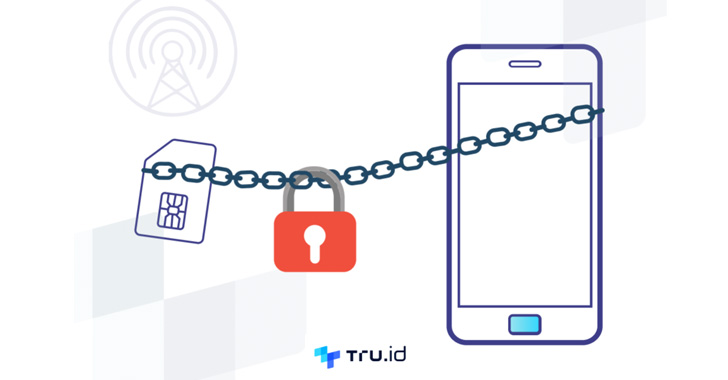Into the Metaverse: How Digital Twins Can Change the Business Landscape

With hybrid work becoming the norm, the mapping technology to build and manage
workplace digital twins could also make it easier for startups to enter the
market. New businesses that would otherwise need to invest in corporate real
estate can achieve virtual flexibility at a lower cost. Because real-time
mapping affords visualization of indoor assets, managers of airports or
hospitals, for instance, can view multiple floors, entrances, stairwells and
rooms to watch what's happening and where. We will likely see crossover in how
this in-the-moment tracking of equipment and resources plays out in the
metaverse and in the real world. ... While the metaverse will likely represent
an avenue of escape and entertainment for many, there's the potential for it to
be a valuable business tool with the capability to offer real-world simulations.
It's something one consultant has been doing on such a scale as to mimic the
effects of global warming and show how it will disrupt businesses and entire
cities. Experiencing one's own replicated neighborhood relative to rising seas,
encroaching storms and more, offers a visceral, relatable experience more likely
to motivate action.
Infra-as-Data vs. Infra-as-Code: What’s the Difference?

On a high level, Infrastructure-as-Data tools like VMware’s Idem and Ansible,
and Infrastructure-as-Code, dominated by Terraform, were created to help DevOps
teams achieve their goals of simplifying and automating application deployments
across multicloud and different environments, while helping to reduce manual
configurations and processes. ... When cloud architectures need to be expressed
using code, “you’re just writing more and more and more and more Terraform,” he
said. “Idem is different from how you generally think of Infrastructure as Code
— everything boils down to these predictable datasets.” “Instead of sitting down
and saying, ‘I’m going to write out a cloud in Terraform,’ you can point Idem
towards your cloud, and it will automatically generate all of the data and all
of the code and the runtimes to enforce it in its current state.” At the same
time, Idem, as well as Ansible to a certain extent, were designed to make cloud
provisioning more automated and simple to manage.
How to develop competency in cyber threat intelligence capabilities

It is necessary to understand operating systems and networks principles at all
levels: File storage, access management, log files policies, security
policies, protocols used to share information between computers, et cetera.
The core concepts, components and conventions associated with cyberdefense and
cybersecurity should be identified, and a strong knowledge of industry best
practices and frameworks is mandatory. Another core tenet is how defensive
approaches and technology align to at least one of the five cyber defense
phases: Identify, protect, detect, respond and recover. Key concepts to know
here are identity and access management and control, network segmentation,
cryptography use cases, firewalls, endpoint detection and response. signature
and behavior based detections, threat hunting and incident response, and red
and purple teams. One should develop a business continuity plan, disaster
recovery plan and incident response plan. ... This part is all about
understanding the role and responsibilities of everyone involved: Reverse
engineers, security operation center analysts, security architects, IT support
and helpdesk members, red/blue/purple teams, chief privacy officers and more.
Build collaborative apps with Microsoft Teams

Teams Toolkit for Visual Studio, Visual Studio Code, and command-line
interface (CLI) are tools for building Teams and Microsoft 365 apps, fast.
Whether you’re new to Teams platform or a seasoned developer, Teams Toolkit is
the best way to create, build, debug, test, and deploy apps. Today we are
excited to announce the Teams Toolkit for Visual Studio Code and CLI is now
generally available (GA). Developers can start with scenario-based code
scaffolds for notification and command-and-response bots, automate upgrades to
the latest Teams SDK version, and debug apps directly to Outlook and Office.
... Microsoft 365 App Compliance Program is designed to evaluate and showcase
the trustworthiness of application-based industry standards, such as SOC 2,
PCI DSS, and ISO 27001 for security, privacy, and data handling practices. We
are announcing the preview of the App Compliance Automation Tool for Microsoft
365 for applications built on Azure to help them accelerate the compliance
journey of their apps.
How API gateways complement ESBs

In the modern IT landscape, service development has moved toward an API-first
and spec-first approach. IT environments are also becoming increasingly
distributed. After all, organizations are no longer on-premises or even
cloud-only, but working with hybrid cloud and multicloud environments. And
their teams are physically distributed, too. Therefore, points of integration
must be able to span various types of environments. The move toward
microservices is fundamentally at odds with the traditional, monolithic ESB.
By breaking down the ESB monolith into multiple focused services, you can
retain many of the ESB’s advantages while increasing flexibility and agility.
... As API standards have matured, the API gateway can be leaner than an ESB,
focused specifically on cross-cutting concerns. Additionally, the API gateway
is focused primarily on client-service communication, rather than on all
service-to-service communication. This specificity of scope allows API
gateways to avoid scope creep, keeping them from becoming yet another monolith
that needs to be broken down. When selecting an API gateway, it is important
to find a product with a clear identity rather than an extensive feature
set.
Artificial intelligence is breaking patent law

Inventions generated by AI challenge the patent system in a new way because
the issue is about ‘who’ did the inventing, rather than ‘what’ was invented.
The first and most pressing question that patent registration offices have
faced with such inventions has been whether the inventor has to be human. If
not, one fear is that AIs might soon be so prolific that their inventions
could overwhelm the patent system with applications. Another challenge is even
more fundamental. An ‘inventive step’ occurs when an invention is deemed
‘non-obvious’ to a ‘person skilled in the art’. This notional person has the
average level of skill and general knowledge of an ordinary expert in the
relevant technical field. If a patent examiner concludes that the invention
would not have been obvious to this hypothetical person, the invention is a
step closer to being patented. But if AIs become more knowledgeable and
skilled than all people in a field, it is unclear how a human patent examiner
could assess whether an AI’s invention was obvious. An AI system built to
review all information published about an area of technology before it invents
would possess a much larger body of knowledge than any human could.
SIM-based Authentication Aims to Transform Device Binding Security to End Phishing

The SIM card has a lot going for it. SIM cards use the same highly secure,
cryptographic microchip technology that is built into every credit card. It's
difficult to clone or tamper with, and there is a SIM card in every mobile
phone – so every one of your users already has this hardware in their pocket.
The combination of the mobile phone number with its associated SIM card
identity (the IMSI) is a combination that's difficult to phish as it's a
silent authentication check. The user experience is superior too. Mobile
networks routinely perform silent checks that a user's SIM card matches their
phone number in order to let them send messages, make calls, and use data –
ensuring real-time authentication without requiring a login. Until recently,
it wasn't possible for businesses to program the authentication infrastructure
of a mobile network into an app as easily as any other code. tru.ID makes
network authentication available to everyone. ... Moreover, with no extra
input from the user, there's no attack vector for malicious actors: SIM-based
authentication is invisible, so there's no credentials or codes to steal,
intercept or misuse.
How to Manage Metadata in a Highly Scalable System

The realization that current data architectures can no longer support the
needs of modern businesses is driving the need for new data engines designed
from scratch to keep up with metadata growth. But as developers begin to look
under the hood of the data engine, they are faced with the challenge of
enabling greater scale without the usual impact of compromising storage
performance, agility and cost-effectiveness. This calls for a new architecture
to underpin a new generation of data engines that can effectively handle the
tsunami of metadata and still make sure that applications can have fast access
to metadata. Next-generation data engines could be a key enabler of
emerging use cases characterized by data-intensive workloads that require
unprecedented levels of scale and performance. For example, implementing an
appropriate data infrastructure to store and manage IoT data is critical for
the success of smart city initiatives. This infrastructure must be scalable
enough to handle the ever-increasing influx of metadata coming from traffic
management, security, smart lighting, waste management and many other systems
without sacrificing performance.
GDPR 4th anniversary: the data protection lessons learned

“As GDPR races to retrofit new legislative ‘add ons’ that most technology
companies will have evolved well beyond by the time they’re implemented, GDPR
is barely an afterthought for marketing professionals who are readying
themselves for a much more seismic change this year: the crumbling of
third-party cookies,” he explained. “Because of that, advertisers will require
new, privacy-respecting, non-tracking-based approaches to reach their target
audiences. Now, then, is the time for businesses to establish what a value
exchange between users and an ad-funded, free internet actually looks like –
but that goes far beyond the remit of GDPR. To increase focus on privacy in
commercial settings, McDermott believes that major stakeholders such as Google
need to “lead the charge” and collaborate when it comes to establishing a best
practice on data capture. “For the smaller businesses,” he added, “it’ll be
about forming an allegiance with bigger technology companies who have the
resources to navigate these changes so they can chart a course together.”
Where is attack surface management headed?

Organizations increasingly suffer from a lack of visibility, drown in threat
intelligence overload, and suffer due to inadequate tools. This means they
struggle to discover, classify, prioritize, and manage internet-facing assets,
which leaves them vulnerable to attack and incapable of defending their
organization proactively. As attack surfaces expand, organizations can’t
afford to limit their efforts to just identify, discover, and monitor. They
must improve their security management by adding continuous testing and
validation. More can and should be done to make EASM solutions more effective
and reduce the number of tools teams need to manage. Solutions must also blend
legacy EASM with vulnerability management and threat intelligence. This more
comprehensive approach addresses business and IT risk from a single solution.
When vendors integrate threat intelligence and vulnerability management in an
EASM solution, in addition to enabling lines of business within the
organization to assign risk scores based on business value, the value
increases exponentially.
Quote for the day:
"The greatest good you can do for
another is not just share your riches, but reveal to them their own." --
Benjamin Disraeli
No comments:
Post a Comment